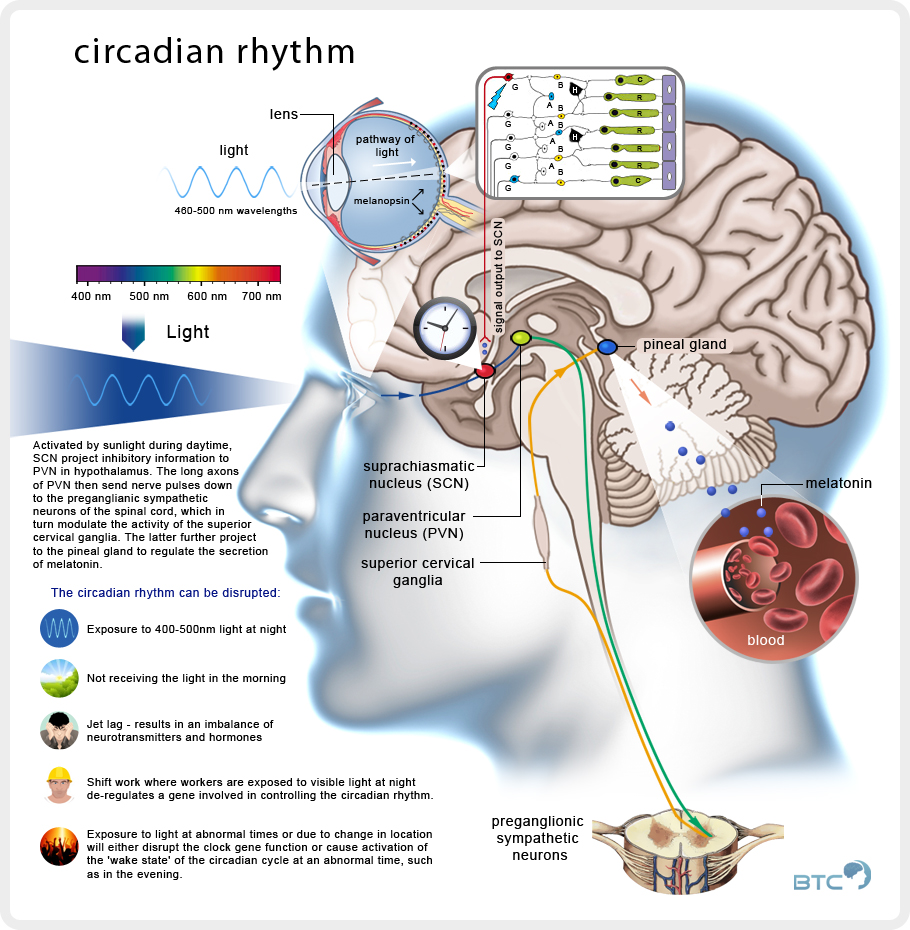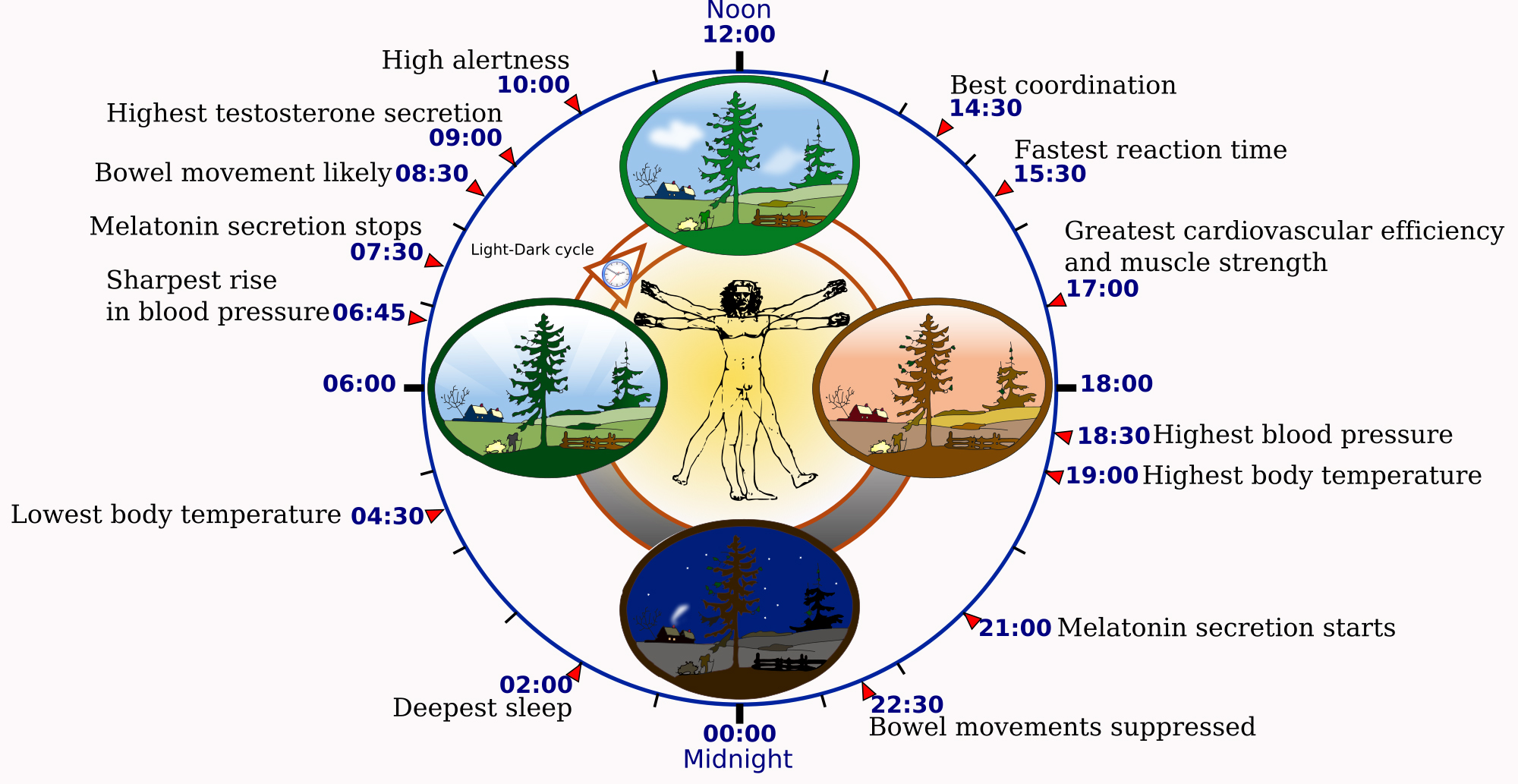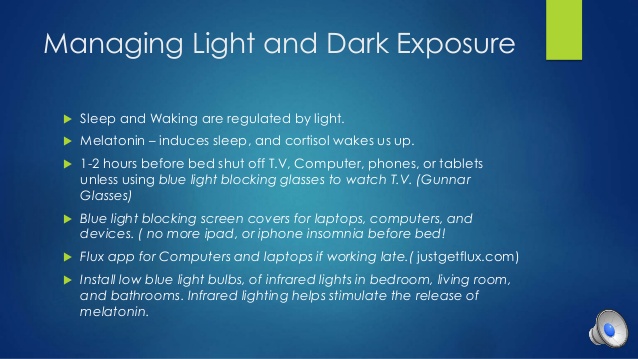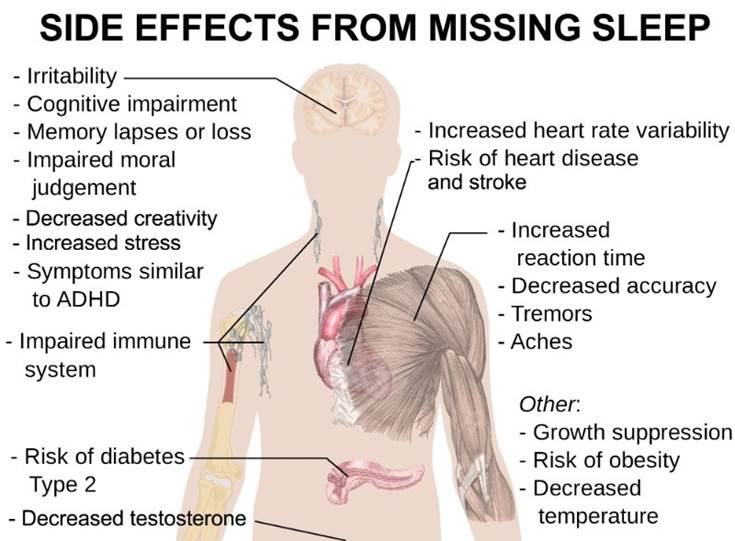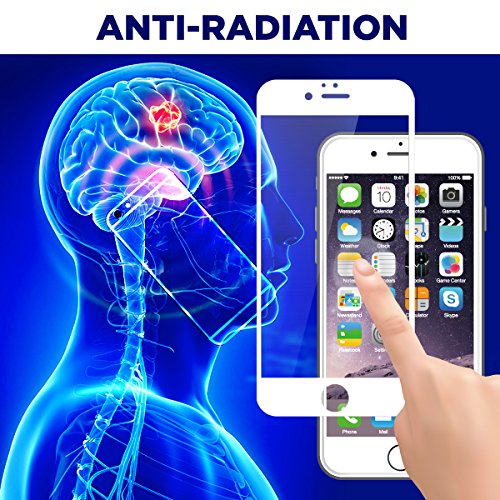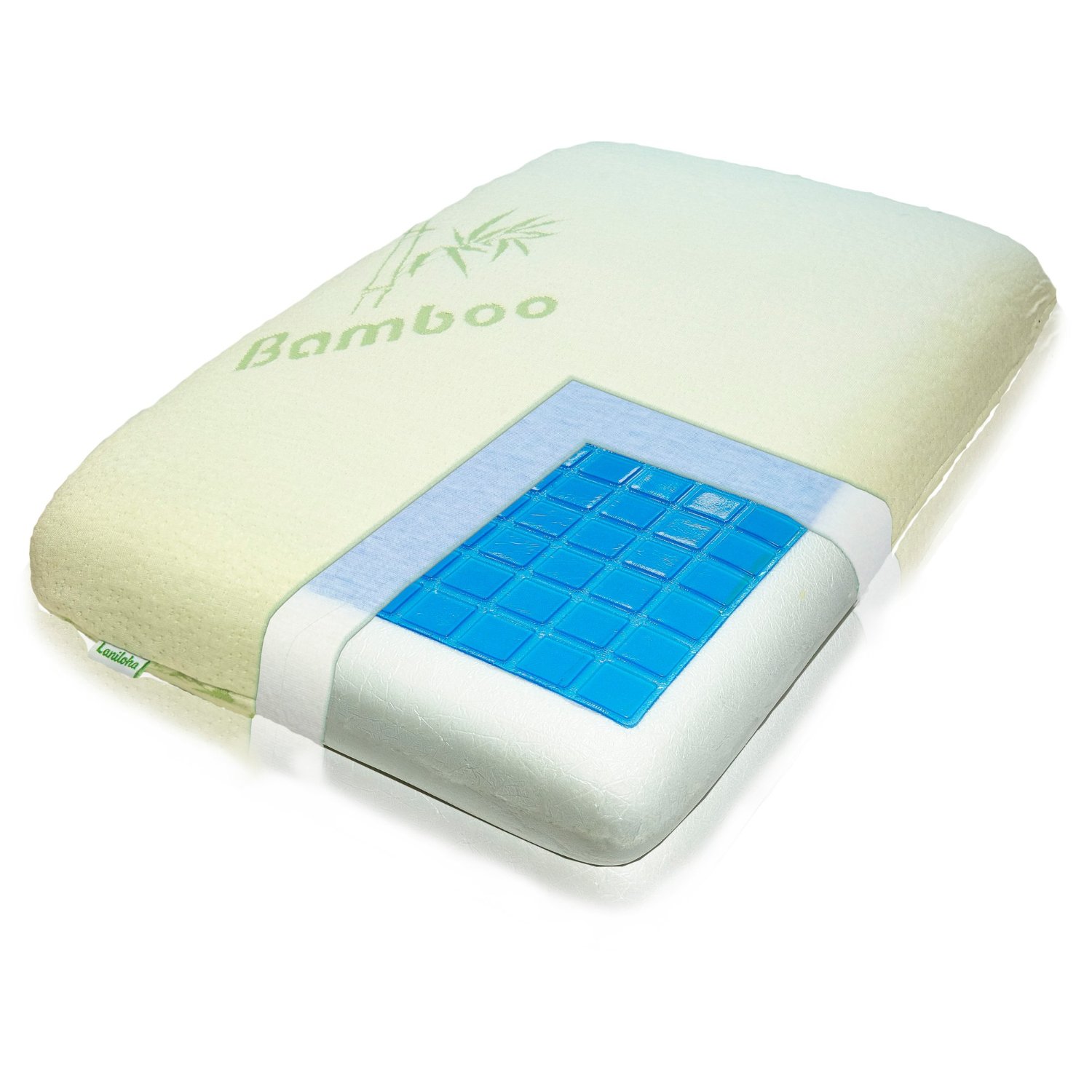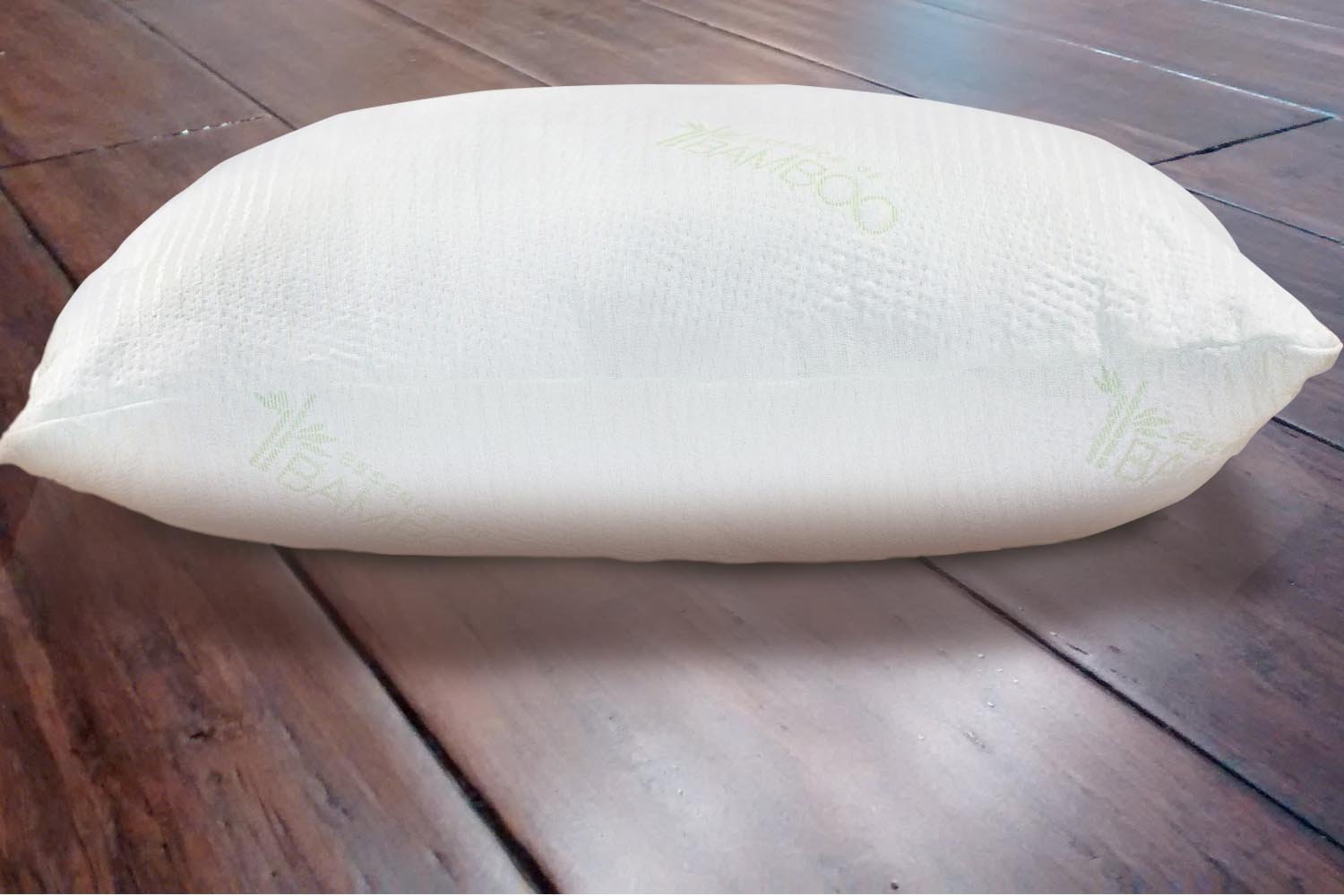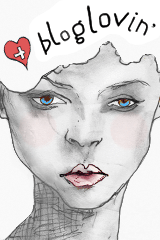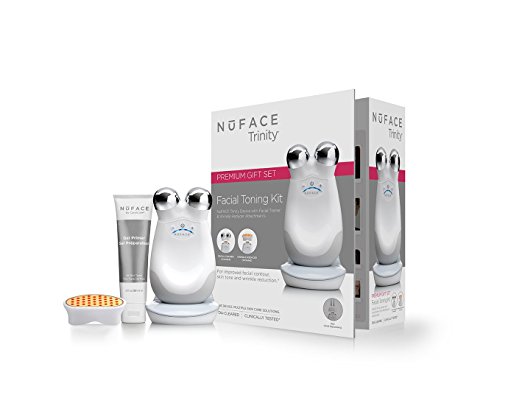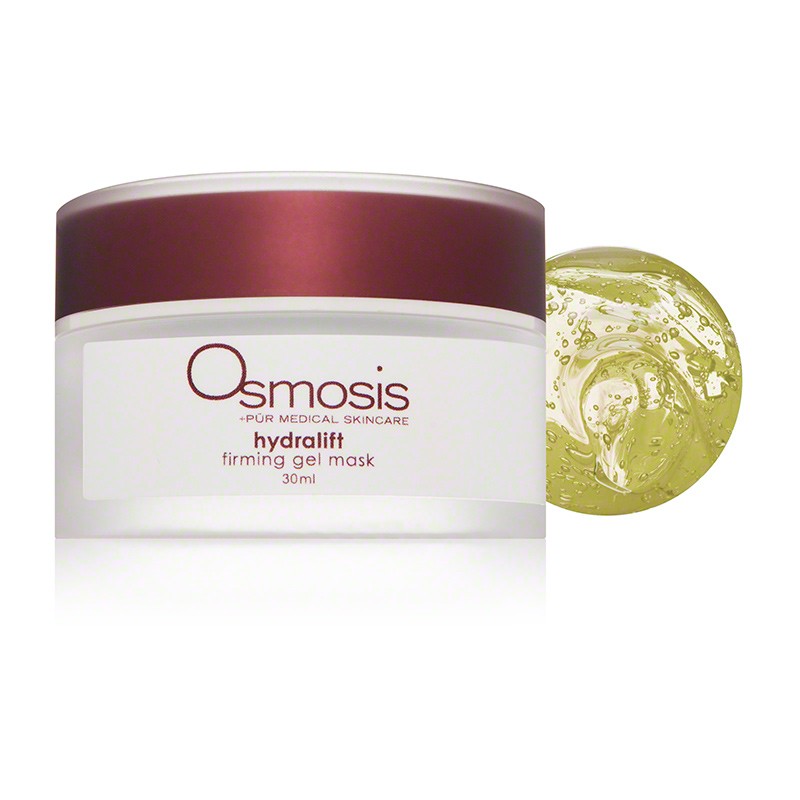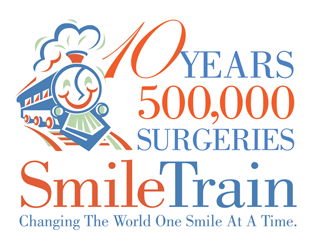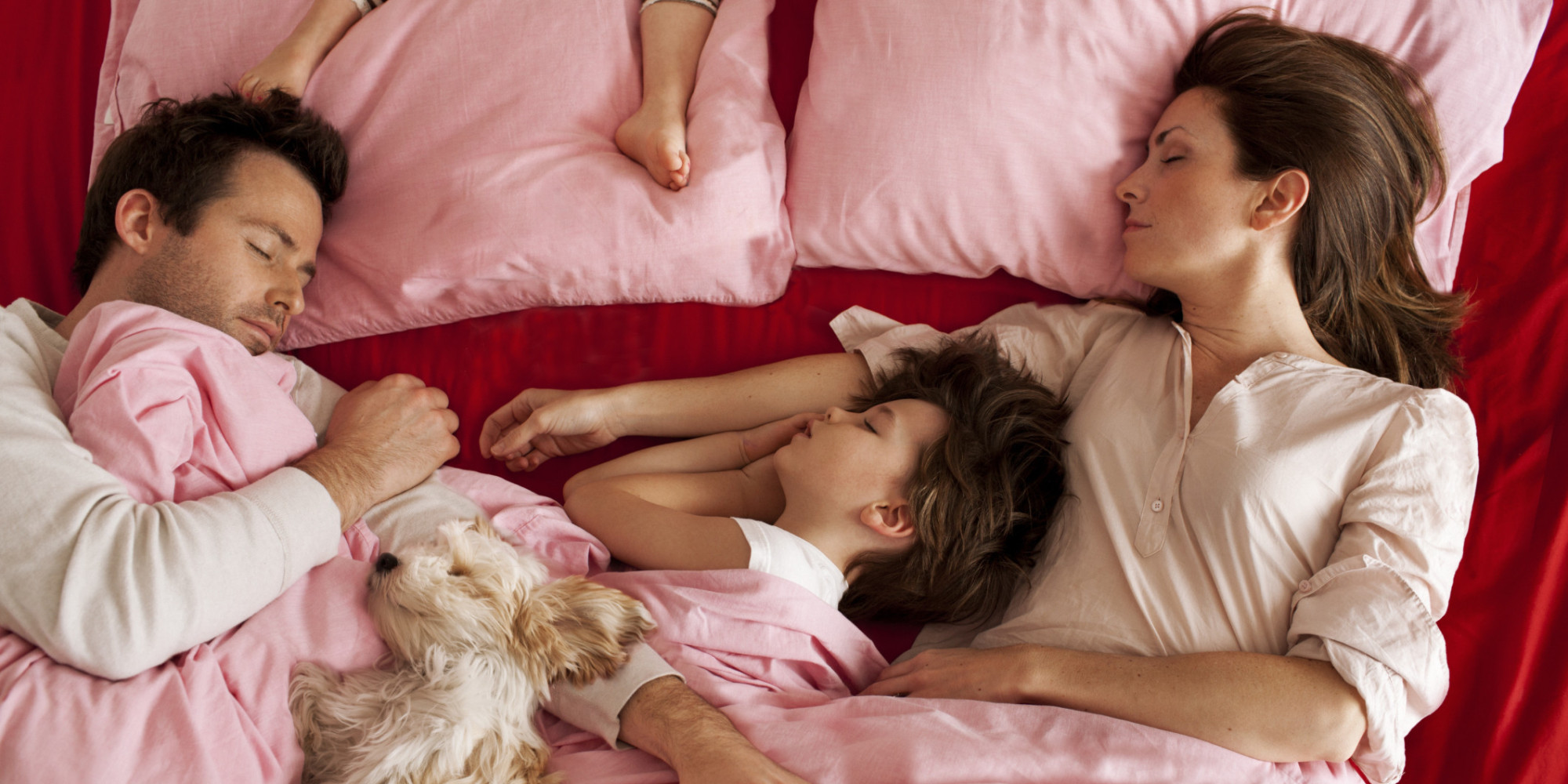
We are here on week 228 sharing post on Sleep, it is amazing the non sleep issue. Non-Sleeping has become an epidemic I even hear it from really young kids. It is amazing the amount of drugs sold for sleeping “AID”, an estimated 40 million prescriptions for such drugs were dispensed, sales of generic Ambien (zolpidem tartrate) amounted to a whopping $2.8 billion and Lunesta another $912 million. Prescription sleep aids are some of the most heavily marketed drugs to the public and so much more to it with these medications. We are not addressing the bottom line source of the problem we are only suppressing the symptom, no long term relief there not to mention the side effects, addictions and the challenge gets bigger and bigger, Here we did extensive research and we have authority based information to aid with this epidemic. We wish for you the reader to find a solution to your sleeping challenge if you have one and if you don’t we are very happy for you, we are sure that you either know some one or will run across somebody that will really appreciate the information, so please pass it along and thank you for the support and following our blog. We take pride to do the research and love making a difference,.thank you from all of us at isabel’s beauty blog.
What is Healthy Sleep?
from: https://sleepfoundation.org/sleep-news/what-healthy-sleep
You know that sleep is vital to your physical and mental health. But, how can you tell whether you’re truly sleeping well? Especially if you work shifts, your sleep probably does not look exactly like other peoples’ sleep. It can be hard to measure your sleep patterns against those of the people around you.
On average, adults should optimally receive between seven and nine hours of sleep each night, but those needs vary individually. For example, some people feel best with eight consecutive hours of sleep, while others do well with six to seven hours at night and daytime napping. Some people feel okay when their sleep schedule changes, while others feel very affected by a new schedule or even one night of insufficient sleep.
Here are some statements about your sleep. If these apply to you, it’s a good sign that your sleep is on track. If you’re a shift worker and you don’t agree with many of these, it could mean that you need to make changes in your behaviors and routines to improve your sleep.
You fall asleep within 15-20 minutes of lying down to sleep.
You regularly sleep a total of seven to nine hours in a 24-hour period.
While in your bed, your sleep is continuous—you don’t have long periods of lying awake when you wish to be sleeping.
You wake up feeling refreshed, as if you’ve “filled the tank.”
You feel alert and are able to be fully productive throughout the waking hours (note, it’s natural for people to feel a dip in alertness during waking hours, but with healthy sleep, alertness returns).
Your partner or family members do not notice any disturbing or out of the ordinary behavior from you while you sleep, such as snoring , pauses in breathing, restlessness, or otherwise nighttime behaviors.
Shift workers who try to sleep during the day often wake up after fewer than seven to nine hours, because of the alerting signals coming from their circadian system . This does not mean they don’t need seven to eight hours of sleep per day—it just means it’s harder to sleep during the day. Over time, this can lead to chronic sleep deprivation.
Circadian Rhythm
Sleep Drive and Your Body Clock
According to: https://sleepfoundation.org/sleep-topics/sleep-drive-and-your-body-clock
Most people notice that they naturally experience different levels of sleepiness and alertness throughout the day, but what causes these patterns? Sleep is regulated by two body systems: sleep/wake homeostasis and the circadian biological clock .
When we have been awake for a long period of time, sleep/wake homeostasis tells us that a need for sleep is accumulating and that it is time to sleep. It also helps us maintain enough sleep throughout the night to make up for the hours of being awake. If this restorative process existed alone, it would mean that we would be most alert as our day was starting out, and that the longer we were awake, the more we would feel like sleeping. In this way, sleep/wake homeostasis creates a drive that balances sleep and wakefulness.
The circadian rhythm dips and rises at different times of the day, so adults’ strongest sleep drive generally occurs between 2:00-4:00 am and in the afternoon between 1:00-3:00 pm, although there is some variation depending on whether you are a “morning person” or “evening person.” The sleepiness we experience during these circadian dips will be less intense if we have had sufficient sleep, and more intense when we are sleep deprived. The circadian rhythm also causes us to feel more alert at certain points of the day, even if we have been awake for hours and our sleep/wake restorative process would otherwise make us feel more sleepy.
Changes to this circadian rhythm occur during adolescence, when most teens experience a sleep phase delay. This shift in teens’ circadian rhythm causes them to naturally feel alert later at night, making it difficult for them to fall asleep before 11:00 pm. Since most teens have early school start times along with other commitments, this sleep phase delay can make it difficult to get the sleep teens need — an average of 9 1/4 hours, but at least 8 hours. This sleep deprivation can influence the circadian rhythm; for teens the strongest circadian “dips” tend to occur between 3:00-7:00 am and 2:00-5:00 pm, but the morning dip (3:00-7:00 am) can be even longer if teens haven’t had enough sleep, and can even last until 9:00 or 10:00 am.
The circadian biological clock is controlled by a part of the brain called the Suprachiasmatic Nucleus (SCN), a group of cells in the hypothalamus that respond to light and dark signals. From the optic nerve of the eye, light travels to the SCN, signaling the internal clock that it is time to be awake. The SCN signals to other parts of the brain that control hormones, body temperature and other functions that play a role in making us feel sleepy or awake.
In the mornings, with exposure to light, the SCN sends signals to raise body temperature and produce hormones like cortisol. The SCN also responds to light by delaying the release of other hormones like melatonin, which is associated with sleep onset and is produced when the eyes signal to the SCN that it is dark. Melatonin levels rise in the evening and stay elevated throughout the night, promoting sleep.
In teenagers, research has shown that melatonin levels in the blood naturally rise later at night than in most children and adults. Since teens may have difficulty going to bed early to get enough sleep, it can help to keep the lights dim at night as bedtime approaches. It can also help to get into bright light as soon as possible in the morning.
Circadian disruptions such as jet lag put us in conflict with our natural sleep patterns, since the shift in time and light cues on the brain forces the body to alter its normal pattern to adjust. This is why jet lag can leave travelers feeling poorly and having more difficulty thinking and performing well. But these symptoms can also occur in everyday life, when the circadian rhythm is disrupted by keeping long and irregular hours. Because of this, it is important to keep a regular sleep schedule and allow plenty of time for quality sleep, allowing these two vital biological components — the sleep/wake restorative process and the circadian rhythm — to help us perform at our best.
Natural Sleep Cycles
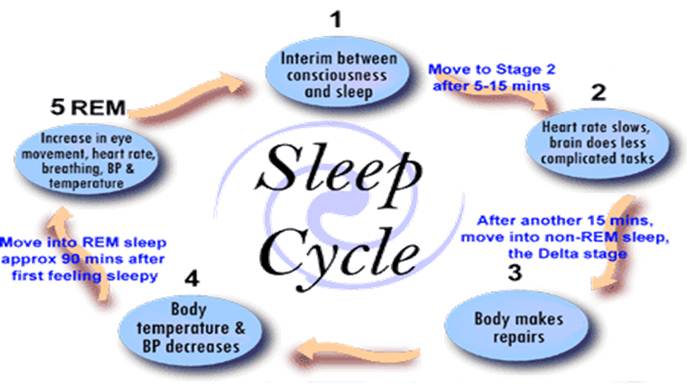
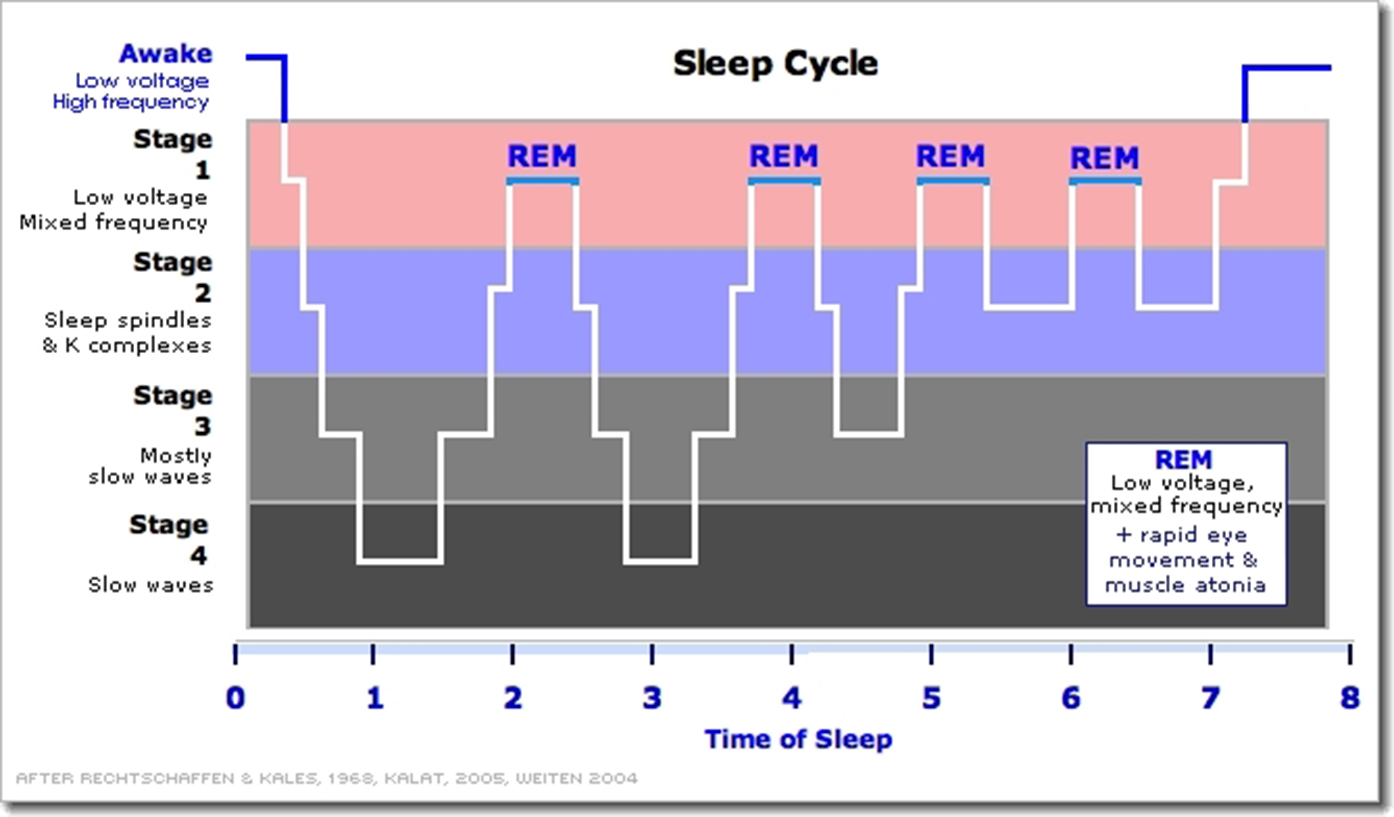 According to: http://healthysleep.med.harvard.edu/healthy/science/what/sleep-patterns-rem-nrem
According to: http://healthysleep.med.harvard.edu/healthy/science/what/sleep-patterns-rem-nrem
In 1929, an invention that enabled scientists to record brain activity challenged this way of thinking. From recordings known as electroencephalograms (EEGs), researchers could see that sleep was a dynamic behavior, one in which the brain was highly active at times, and not turned off at all. Over time, sleep studies using EEGs and other instruments that measured eye movements and muscle activity would reveal two main types of sleep. These were defined by characteristic electrical patterns in a sleeping person’s brain, as well as the presence or absence of eye movements.
The two main types of sleep are rapid-eye-movement (REM) sleep and non-rapid-eye-movement (NREM) sleep. On an EEG, REM sleep, often called “active sleep,” is identifiable by its characteristic low-amplitude (small), high-frequency (fast) waves and alpha rhythm, as well as the eye movements for which it is named. Many sleep experts think that these eye movements are in some way related to dreams. Typically, when people are awakened from REM sleep, they report that they had been dreaming, often extremely vivid and sometimes bizarre dreams. In contrast, people report dreaming far less frequently when awakened from NREM sleep. Interestingly, during REM sleep muscles in the arms and legs are temporarily paralyzed. This is thought to be a neurological barrier that prevents us from “acting out” our dreams.
NREM sleep can be broken down into three distinct stages: N1, N2, and N3. In the progression from stage N1 to N3, brain waves become slower and more synchronized, and the eyes remain still. In stage N3, the deepest stage of NREM, EEGs reveal high-amplitude (large), low-frequency (slow) waves and spindles. This stage is referred to as “deep” or “slow-wave” sleep.
In healthy adults, sleep typically begins with NREM sleep. The pattern of clear rhythmic alpha activity associated with wakefulness gives way to N1, the first stage of sleep, which is defined by a low-voltage, mixed-frequency pattern. The transition from wakefulness to N1 occurs seconds to minutes after the start of the slow eye movements seen when a person first begins to nod off. This first period of N1 typically lasts just one to seven minutes. The second stage, or N2, which is signaled by sleep spindles and/or K complexes in the EEG recording, comes next and generally lasts 10 to 25 minutes. As N2 sleep progresses, there is a gradual appearance of the high-voltage, slow-wave activity characteristic of N3, the third stage of NREM sleep. This stage, which generally lasts 20 to 40 minutes, is referred to as “slow-wave,” “delta,” or “deep” sleep. As NREM sleep progresses, the brain becomes less responsive to external stimuli, and it becomes increasingly difficult to awaken an individual from sleep.
Following the N3 stage of sleep, a series of body movements usually signals an “ascent” to lighter NREM sleep stages. Typically, a 5- to 10-minute period of N2 precedes the initial REM sleep episode. REM sleep comprises about 20 to 25 percent of total sleep in typical healthy adults.
NREM sleep and REM sleep continue to alternate through the night in a cyclical fashion. Most slow-wave NREM sleep occurs in the first part of the night; REM sleep episodes, the first of which may last only one to five minutes, generally become longer through the night. During a typical night, N3 sleep occupies less time in the second cycle than the first and may disappear altogether from later cycles. The average length of the first NREM-REM sleep cycle is between 70 and 100 minutes; the average length of the second and later cycles is about 90 to 120 minutes. The reason for such a specific cycling pattern of NREM and REM sleep across the night is unknown. Some scientists speculate that specific sequences of NREM and REM sleep optimize both physical and mental recuperation as well as some aspects of memory consolidation that occur during sleep, but this has not been confirmed.
Sleeping Positions
According to: http://bettersleep.org/better-sleep/sleep-positions
There are three main sleeping positions with variables of each: side, back, and stomach. Sleep specialists recommend sleeping on your side in order to rest more comfortably and decrease the likelihood of interrupted sleep. While there are many variations of sleeping on your side, all of which are beneficial in helping to alleviate insomnia and chronic sleep deprivation, the most comfortable position involves bending the knees slightly upwards towards the chest area. For those with a bad back, consider placing a pillow between your legs to alleviate pressure on your hips and lower back. Sleeping on your side is actually encouraged for those suffering from back or hip pain or pregnant women, since this position doesn’t increase pain in these areas.
If you prefer to sleep on your back, be careful as it may actually induce lower back pain and even episodes of apnea which interfere with normal sleep and restfulness. However, if you prefer to sleep on your back, there are a few minor alterations to this position that you can do to help sleep more soundly. Try placing a soft pillow or rolled up towel under your knees to facilitate the natural curve of the spine.
If you like sleeping on your stomach, you’re in for a bit of bad news…sleep professionals don’t recommend sleeping on your stomach as it causes strain on your lower back and possible neck pain. People who sleep on their stomach report increased restlessness caused by frequent tossing and turning in an effort to get comfortable. If you do sleep on your stomach use an extremely soft pillow or none at all so as not to put your neck at an awkward angle. For those with sleep problems to begin with, it’s best not to sleep on your stomach.
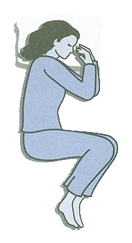 Fetus position – A whopping 41% of participants sleep in this curled-up manner. Women are twice as likely to rest like this and it is listed as the most common position. These sleepers are said to have a tough exterior but are still sensitive and may appear to be shy but warm up quickly.
Fetus position – A whopping 41% of participants sleep in this curled-up manner. Women are twice as likely to rest like this and it is listed as the most common position. These sleepers are said to have a tough exterior but are still sensitive and may appear to be shy but warm up quickly.
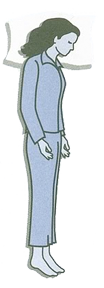 Log position – If you sleep on your side with both arms down, you are a social, easy-going person who is trusting, sometimes to the point of being gullible. The study showed 15% of people sleep like a log.
Log position – If you sleep on your side with both arms down, you are a social, easy-going person who is trusting, sometimes to the point of being gullible. The study showed 15% of people sleep like a log.
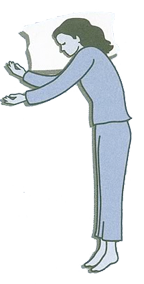 Yearner position – A close third is the side-lying position with both arms out in front of the body, with 13% of partipants sleeping like this. Yearners are noted to be open-minded and still cynical, suspicious, and stubborn about sticking to decisions once they are made.
Yearner position – A close third is the side-lying position with both arms out in front of the body, with 13% of partipants sleeping like this. Yearners are noted to be open-minded and still cynical, suspicious, and stubborn about sticking to decisions once they are made.
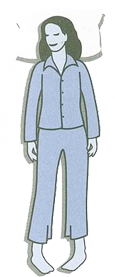 Soldier position – These sleepers lie on their backs with arms down and kept close to the body. This 8% study is said to be reserved, quiet, without fuss, and hold themselves and others to a high standard. Soldier sleepers have a higher likelihood for snoring due to the flat-back position, which may not cause them to wake up often but may result in a less restful night’s sleep.
Soldier position – These sleepers lie on their backs with arms down and kept close to the body. This 8% study is said to be reserved, quiet, without fuss, and hold themselves and others to a high standard. Soldier sleepers have a higher likelihood for snoring due to the flat-back position, which may not cause them to wake up often but may result in a less restful night’s sleep.
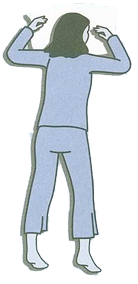 Freefall position – Those people who lie on their bellies with arms under or wrapped around a pillow with head turned to the side, make up 7% of the population studied. Freefallers are brash, outgoing, and are very uncomfortable with criticism.
Freefall position – Those people who lie on their bellies with arms under or wrapped around a pillow with head turned to the side, make up 7% of the population studied. Freefallers are brash, outgoing, and are very uncomfortable with criticism.
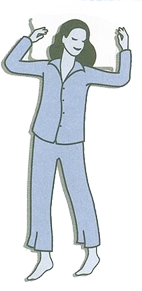 Starfish position – Sleepers who lie on their backs with arms up near their head or the pillow account for 5% of participants. These people are good listeners, helpful, and are uncomfortable being the center of attention. People who sleep in starfish position are more likely to snore and to suffer from a poor night’s sleep more often.
Starfish position – Sleepers who lie on their backs with arms up near their head or the pillow account for 5% of participants. These people are good listeners, helpful, and are uncomfortable being the center of attention. People who sleep in starfish position are more likely to snore and to suffer from a poor night’s sleep more often.
Blue light has a dark side
According to: http://www.health.harvard.edu/staying-healthy/blue-light-has-a-dark-side
Light at night is bad for your health, and exposure to blue light emitted by electronics and energy-efficient lightbulbs may be especially so.
Until the advent of artificial lighting, the sun was the major source of lighting, and people spent their evenings in (relative) darkness. Now, in much of the world, evenings are illuminated, and we take our easy access to all those lumens pretty much for granted.
But we may be paying a price for basking in all that light. At night, light throws the body’s biological clock—the circadian rhythm—out of whack. Sleep suffers. Worse, research shows that it may contribute to the causation of cancer, diabetes, heart disease, and obesity.
But not all colors of light have the same effect. Blue wavelengths—which are beneficial during daylight hours because they boost attention, reaction times, and mood—seem to be the most disruptive at night. And the proliferation of electronics with screens, as well as energy-efficient lighting, is increasing our exposure to blue wavelengths, especially after sundown.
Daily rhythms influenced by light
Everyone has slightly different circadian rhythms, but the average length is 24 and one-quarter hours. The circadian rhythm of people who stay up late is slightly longer, while the rhythms of earlier birds fall short of 24 hours. Dr. Charles Czeisler of Harvard Medical School showed, in 1981, that daylight keeps a person’s internal clock aligned with the environment.
The health risks of night time light
Study after study has linked working the night shift and exposure to light at night to several types of cancer (breast, prostate), diabetes, heart disease, and obesity. It’s not exactly clear why nighttime light exposure seems to be so bad for us. But we do know that exposure to light suppresses the secretion of melatonin, a hormone that influences circadian rhythms, and there’s some experimental evidence (it’s very preliminary) that lower melatonin levels might explain the association with cancer.
A Harvard study shed a little bit of light on the possible connection to diabetes and possibly obesity. The researchers put 10 people on a schedule that gradually shifted the timing of their circadian rhythms. Their blood sugar levels increased, throwing them into a prediabetic state, and levels of leptin, a hormone that leaves people feeling full after a meal, went down.
Even dim light can interfere with a person’s circadian rhythm and melatonin secretion. A mere eight lux—a level of brightness exceeded by most table lamps and about twice that of a night light—has an effect, notes Stephen Lockley, a Harvard sleep researcher. Light at night is part of the reason so many people don’t get enough sleep, says Lockley, and researchers have linked short sleep to increased risk for depression, as well as diabetes and cardiovascular problems.
The power of the blues
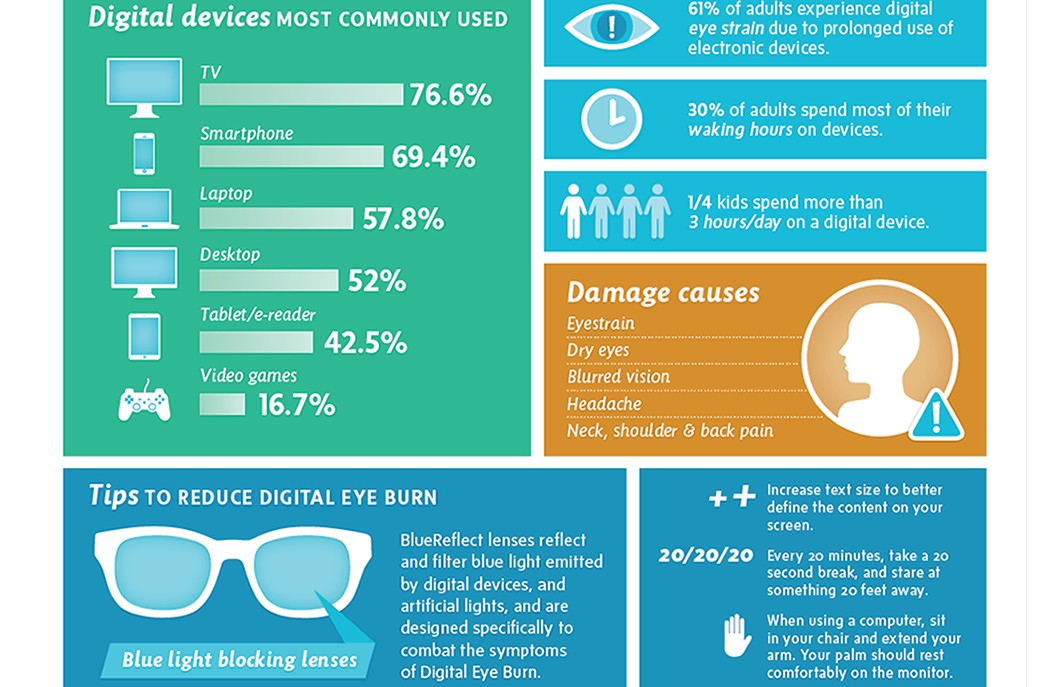
While light of any kind can suppress the secretion of melatonin, blue light does so more powerfully. Harvard researchers and their colleagues conducted an experiment comparing the effects of 6.5 hours of exposure to blue light to exposure to green light of comparable brightness. The blue light suppressed melatonin for about twice as long as the green light and shifted circadian rhythms by twice as much (3 hours vs. 1.5 hours).
In another study of blue light, researchers at the University of Toronto compared the melatonin levels of people exposed to bright indoor light who were wearing blue-light–blocking goggles to people exposed to regular dim light without wearing goggles. The fact that the levels of the hormone were about the same in the two groups strengthens the hypothesis that blue light is a potent suppressor of melatonin. It also suggests that shift workers and night owls could perhaps protect themselves if they wore eyewear that blocks blue light. Inexpensive sunglasses with orange-tinted lenses block blue light, but they also block other colors, so they’re not suitable for use indoors at night. Glasses that block out only blue light can cost up to $80.
Less-blue light
If blue light does have adverse health effects, then environmental concerns, and the quest for energy-efficient lighting, could be at odds with personal health. Those curlicue compact fluorescent lightbulbs and LED lights are much more energy-efficient than the old-fashioned incandescent lightbulbs we grew up with. But they also tend to produce more blue light.
The physics of fluorescent lights can’t be changed, but coatings inside the bulbs can be so they produce a warmer, less blue light. LED lights are more efficient than fluorescent lights, but they also produce a fair amount of light in the blue spectrum. Richard Hansler, a light researcher at John Carroll University in Cleveland, notes that ordinary incandescent lights also produce some blue light, although less than most fluorescent lightbulbs.
What you can do
Use dim red lights for night lights. Red light has the least power to shift circadian rhythm and suppress melatonin.
Avoid looking at bright screens beginning two to three hours before bed.
If you work a night shift or use a lot of electronic devices at night, consider wearing blue-blocking glasses.
Expose yourself to lots of bright light during the day, which will boost your ability to sleep at night, as well as your mood and alertness during daylight.
What Happens in Your Body When You’re Sleep Deprived?
By Dr. Mercola According to: http://articles.mercola.com/sites/articles/archive/2016/03/03/sleep-deprivation-effects.aspx https://youtu.be/qPoZVQvsbW0
Lack of sleep has many ramifications, from minor to major, depending on your accumulated sleep debt. Short term, lack of sleep tends to have an immediate effect on your mental and emotional states.
Over the long term, poor sleep can contribute to a whole host of chronic health problems, from obesity and diabetes to immune problems and an increased risk for cancer. Plus it raises your risk of accidents and occupational errors.
Unfortunately, few are those who sleep well on a regular basis. Part of the problem is our propensity for using artificial lighting and electronics at night, in combination with getting insufficient exposure to full, bright, and natural sunlight during the day.
This disconnect from the natural cycles of day and night, activity and sleep, can turn into a chronic problem where you’re constantly struggling to sleep well.
Fortunately the remedy is simple, and if you follow the recommendations at the end of this article, chances are you’ll be able to reestablish a healthy sleep pattern, without which you simply cannot be optimally healthy — even if you do everything else right.
A Single Night Without Sleep Can Have Severe Implications
As shown in the video above, going just one night without proper sleep starts to impair your physical movements and mental focus, comparable to having a blood alcohol level of 0.10 percent.
In essence, if you haven’t slept, your level of impairment is on par with someone who’s drunk.
According to researchers, 24 hours’ worth of sleeplessness breaks down cognitive faculties to such a degree that you’ll be 4.5 times more likely to sign a false confession.
Overall, you become more susceptible to “suggested” memories, and start having trouble discerning the true source of your memories. For example, you might confuse something you read somewhere with a first-hand experience. According to the authors of this study:
“We propose that sleep deprivation sets the stage for a false confession by impairing complex decision making abilities — specifically, the ability to anticipate risks and consequences, inhibit behavioral impulses, and resist suggestive influences.”
Lack of Sleep Linked to Internet Surfing and Poor Grades
Other research has linked lack of sleep to more extended internet usage, such as browsing through Facebook rather than studying or working. The reason for this is again related to impaired cognition and the inability to focus, making you more prone to distraction.
Not surprisingly, academic performance also suffers. In one recent study, the less sleep high school students reported getting, the lower their average grades were.
How Sleep Influences and Regulates Emotional Perception
Sleeping well is also important for maintaining emotional balance. Fatigue compromises your brain’s ability to regulate emotions, making you more prone to crankiness, anxiety, and unwarranted emotional outbursts.
Recent research also shows that when you haven’t slept well, you’re more apt to overreact to neutral events; you may feel provoked when no provocation actually exists, and you may lose your ability to sort out the unimportant from the important, which can result in bias and poor judgment.
Reporting on this research, in which participants were kept awake for one whole night before taking a series of image tests to gauge emotional reactions and concentration levels, Medical News Today writes:
“… Eti Ben-Simon, who conducted the experiment, believes that sleep deprivation may universally impair judgment, but it is more likely that a lack of sleep causes neutral images to provoke an emotional response.
The second test examined concentration levels. Participants inside an fMRI scanner had to complete a task that demanded their attention to press a key or button, while ignoring distracting background pictures with emotional or neutral content …
After only one night without sleep, participants were distracted by every single image (neutral and emotional), while well-rested participants only found the emotional images distracting.
The effect was indicated by activity change, or what Prof. Hendler calls ‘a change in the emotional specificity’ of the amygdala … a major limbic node responsible for emotional processing in the brain.”
What Happens in Your Body After Two or More Sleepless Nights?
After 48 hours of no sleep, your oxygen intake is lessened and anaerobic power is impaired, which affects your athletic potential. You may also lose coordination, and start to forget words when speaking. It’s all downhill from there.
After the 72 hour-mark of no sleep, concentration takes a major hit, and emotional agitation and heart rate increases. Your chances of falling asleep during the day increase and along with it, your risk of having an accident.
In 2013, drowsy drivers caused 72,000 car accidents in which 800 Americans were killed, and 44,000 were injured. Your problem-solving skills dwindle with each passing sleepless night, and paranoia can become a problem.
In some cases, hallucinations and sleep deprivation psychosis can set in — a condition in which you can no longer interpret reality. Recent research suggests psychosis can occur after as little as 24 hours without sleep, effectively mimicking symptoms observed in those with schizophrenia.
Sleep Deprivation Decreases Your Immune Function
Research published in the journal Sleep reports that sleep deprivation has the same effect on your immune system as physical stress.
The researchers measured the white blood cell counts in 15 people who stayed awake for 29 hours straight, and found that blood cell counts increased during the sleep deprivation phase. This is the same type of response you typically see when you’re sick or stressed.
In a nutshell, whether you’re physically stressed, sick, or sleep-deprived, your immune system becomes hyperactive and starts producing white blood cells — your body’s first line of defense against foreign invaders like infectious agents. Elevated levels of white blood cells are typically a sign of disease. So your body reacts to sleep deprivation in much the same way it reacts to illness.
Other study findings suggest that deep sleep plays a very special role in strengthening immunological memories of previously encountered pathogens in a way similar to psychological long-term memory retention. When you’re well rested, your immune system is able to mount a much faster and more effective response when an antigen is encountered a second time.
When you’re sleep-deprived, your body loses much of this rapid response ability. Unfortunately, sleep is one of the most overlooked factors of optimal health in general, and immune function in particular.
Sleeping Poorly Raises Your Risk of Type 2 Diabetes
A number of studies have demonstrated that lack of sleep can play a significant role in insulin resistance and type 2 diabetes. In earlier research, women who slept five hours or less every night were 34 percent more likely to develop diabetes symptoms than women who slept for seven or eight hours each night.
According to research published in the Annals of Internal Medicine, after four nights of sleep deprivation (sleep time was only 4.5 hours per night), study participants’ insulin sensitivity was 16 percent lower, while their fat cells’ insulin sensitivity was 30 percent lower, and rivaled levels seen in those with diabetes or obesity.
Senior author Matthew Brady, Ph.D., an associate professor of Medicine at the University of Chicago, noted that: “This is the equivalent of metabolically aging someone 10 to 20 years just from four nights of partial sleep restriction. Fat cells need sleep, and when they don’t get enough sleep, they become metabolically groggy.”
Similarly, researchers warn that teenage boys who get too little slow-wave sleep are at increased risk of developing type 2 diabetes. Slow-wave sleep is a sleep stage associated with reduced levels of cortisol (a stress hormone) and reduced inflammation. As reported by MedicineNet.com:
“Boys who lost a greater amount of slow-wave sleep between childhood and the teen years had a higher risk of developing insulin resistance than those whose slow-wave sleep totals remained fairly stable over the years …
‘On a night following sleep deprivation, we’ll have significantly more slow-wave sleep to compensate for the loss,’ study author Jordan Gaines … said … ‘We also know that we lose slow-wave sleep most rapidly during early adolescence. Given the restorative role of slow-wave sleep, we weren’t surprised to find that metabolic and cognitive [mental] processes were affected during this developmental period.’”
The Many Health Hazards of Sleep Deprivation
Aside from directly impacting your immune function, another explanation for why poor sleep can have such varied detrimental effects on your health is that your circadian system “drives” the rhythms of biological activity at the cellular level. We’ve really only begun to uncover the biological processes that take place during sleep.
For example, during sleep your brain cells shrink by about 60 percent, which allows for more efficient waste removal. This nightly detoxification of your brain appears to be very important for the prevention of dementia and Alzheimer’s disease. Sleep is also intricately tied to important hormone levels, including melatonin, the production of which is disturbed by lack of sleep.
This is extremely problematic, as melatonin inhibits the proliferation of a wide range of cancer cell types, as well as triggers cancer cell apoptosis (self-destruction).
Natural Insomnia Treatment
from: http://www.drweil.com/drw/u/ART02004/insomnia
Courtesy of Dr. Weil on Healthy Aging, Your Online Guide to the Anti-Inflammatory Diet.
Insomnia is a relatively common sleeping disorder, affecting about one-third of the adult population worldwide. Around 10 to 20 percent of adults with insomnia experience severe sleeplessness. Insomnia is more common in women, but the quality of sleep often decreases as we age, equally in both women and men. Although so-called insomnia cures are promoted widely, there are no guaranteed insomnia cures. There is, however, much that can be done to improve quality and duration of sleep.
In addition to having problems falling asleep at night, many people with insomnia may feel sleepy during the day, fall asleep during meetings or when they are watching a movie, have problems concentrating and remembering things, and feel irritable. Insomnia can also be marked by waking up frequently during the night and having difficulty falling back to sleep; by waking up too early in the morning; and by feeling unrefreshed following sleep.
During sleep the body produces many important hormones and neurotransmitters, such as human growth hormone (HGH) and serotonin. Researchers are still exploring the long-term health implications of poor sleep, but immune function, memory, mental function and mood can all be affected.
There are three classifications of insomnia:
1. Transient or short-term insomnia, which occurs infrequently (generally less than once a week).
2. Intermittent insomnia, which comes and goes, usually without a pattern.
3. Chronic insomnia, which is an ongoing problem that occurs most nights and lasts at least a month.
Causes and Symptoms
Many factors can contribute to insomnia, including stress. Others include:
Exposure to extreme temperature fluctuations or environmental noise
Disruption in sleep/wake patterns due to jet lag, work schedules, or other reasons
Side effects of medications
A change in the surrounding environment
Premenstrual syndrome, menstruation, pregnancy or menopause
For those suffering from chronic insomnia, the causes are usually more complex and result from a combination of factors, which can include:
Depression (the most common cause)
Chronic pain
Arthritis
Kidney disease
Restless leg syndrome
Heart failure
Parkinson’s disease
Sleep apnea
Asthma
In addition, there may be some behavioral reasons for chronic insomnia:
Anxiety about not being able to sleep
Drinking alcohol before bedtime
Consuming excessive amounts of caffeine
Smoking cigarettes before bedtime
Excessive napping in the afternoon or evening
Continually disrupted sleep/wake schedule possibly from work schedules or nighttime activities
Recommended Lifestyle Changes for Insomnia Treatment
https://youtu.be/mSKdvmurnBc
The following are some of the best possible insomnia remedies:
Establish a consistent bedtime routine. This is one of the most important factors in insomnia treatment and maintaining good sleeping habits. Routines may include taking a warm bath or a relaxing walk in the evening, or practicing meditation/relaxation exercises as part of your regular nighttime routine.
Try to go to bed at the same time every night, and get up at the same time each morning. This includes weekends.
Get plenty of exercise during the day. Studies have shown that people who are physically active sleep better than those who are sedentary. The more energy you expend during the day, the sleepier you will feel at bedtime. Just be sure not to engage in vigorous exercise too close to bedtime as that can make it more difficult to fall asleep.
Reduce your intake of caffeine, particularly in the evening.
Avoid stimulants like caffeine and limit alcohol. Both, even when consumed early in the day, can affect sleep and inhibit insomnia treatment.
Use your bed only for sleeping and sex. Don’t use it to do work or watch TV.
Avoid large meals late in the evening.
If you can’t fall asleep within half an hour of going to bed, get up and read or do something calming until you feel sleepy.
Learn and use a relaxation technique regularly. Breathing exercises, meditation and yoga are not insomnia cures, but do lead to a state conducive to sleep.
Use “white noise” devices to block out surrounding environmental noise.
Take a hot bath before bedtime. Try a few drops of relaxing oil of lavender in the water.
Short naps are good. Try to get into the habit of napping for insomnia treatment: ten to twenty minutes in the afternoon, preferably lying down in a darkened room.
Spend some time outdoors as often as you can to get exposure to bright, natural light. If you are concerned about harmful effects of solar radiation, do it before ten in the morning or after three in the afternoon or use sunscreen.
Try to give yourself some time – up to an hour – in dim light before you go to sleep at night. Lower the lighting in your house and bedroom and if other members of the household object, wear sunglasses.
The two best natural sleep aids are valerian and melatonin. Valerian is a sedative herb, used for centuries. You can find standardized extracts in health food stores and pharmacies. Take one to two capsules a half hour before bedtime. Melatonin is a hormone that regulates the wake/sleep cycle and other daily biorhythms. Try sublingual tablets (to be placed under the tongue and allowed to dissolve); take 2.5 mg at bedtime as an occasional dose, making sure that your bedroom is completely dark. A much lower dose, 0.25 to 0.3 mg, is more effective for regular use.
Don’t obsess about not sleeping. Not surprisingly, studies have shown that individuals who worry about falling asleep have greater trouble dropping off. It may help to remind yourself that while sleeplessness is troublesome, it isn’t life-threatening and there are insomnia remedies.
Top 20 Ways to Fall Asleep Fast! Contribution of Dr. AXE
https://youtu.be/ixscQ3t1oJY
According to: http://draxe.com/cant-sleep/
1. Set the right temperature.
A too-warm room makes you sweaty, while super cold temps leave you shivering. Opt for a range between 60 and 73 degrees F. A slightly chilly temperature helps decrease your body’s internal thermometer, initiating sleepiness and ensuring you stay comfortable throughout the night.
2. Set the mood.
Dim the lights at least 30 minutes before bedtime. Turn off extra noises, lights and distractions. Turn on a fan, white noise machine, calming instrumental music or use earplugs to adjust your environment to be the most comfortable to you. Try to make this a routine to tell your body it’s time to sleep and help it ease into a peaceful night’s rest.
3. Use essential oils.
Incorporating essential oils, or aromatherapy, into your nightly routine is a safe, natural and therapeutic way to encourage your body to wind down. I especially love using lavender essential oil and roman chamomile oil to get me in a drowsy mood on those nights I can’t sleep.
I recommend diluting the pure oil with a carrier oil like almond or coconut oils and then spritzing on your pillow or rubbing on your neck. Or add just a few drops to an essential oils diffuser to fill the room with a relaxing scent. Learn more about the power of essential oils and diluting them in my essential oils guide.
4. Unwind your mind.
Settle into bed with a good novel or a spiritual growth book a half hour or so before bedtime. This practice gives your body a chance to unwind instead of forcing it to try and head straight to sleep. But steer clear of thrillers or other brain-jarring reads — you want to lull yourself to bed, not stay awake with a page turner!
5. Skip late night sugar and simple carbs.
Avoid eating sugary sweets, chocolate, simple carbs, juice or high-glycemic fruit just before bed, as it can spike blood sugar, boost your energy and you can wake up feeling hungry. Instead, try a little bit of protein with vegetables or a small amount of complex carbohydrates with protein, which can boost melatonin and help you fall asleep fast!
Some people can tolerate some fruit before bed, but make your snack with a combination of melatonin-forming foods and protein so you don’t wake up in the middle of the night. Some good bedtime snacks are:
half a banana with almond butter on a slice of sprouted grain bread
hummus with carrots, cucumber or celery
apple chips and sunflower butter
a small handful of cashews, 1/4 cup dried fruit with some seed-based crackers
6. Keep electronics out of bed.
Watching television in bed and answering late-night work emails trick your brain into thinking that your bed is just another spot to get things done and not the place to settle down after a long day. Watch your evening programs in the living room, and keep that space sacred by eliminating electronics.
7. Maintain a regular sleep schedule.
Keep your circadian rhythm in check by adhering to a regular sleep schedule as much as possible — yes, even on weekends! As your body becomes used to getting into bed and waking up at the same hours, you’ll find it becomes easier to fall asleep and wake up naturally. Aim for an average of eight hours of quality sleep a night.
8. Limit caffeine after 12 p.m.
Did you know caffeine’s effects can last up to 12 hours? If you can’t sleep at night, your mid-afternoon cup of joe might be to blame. Try an alternative, caffeine-free drink for a daytime jolt instead. I love this Cilantro Ginger Smoothie. Filled with refreshing cucumber and ginger, it’ll give you a boost of energy without the sleep-depriving effects of caffeine.
9. Work out in the morning.
That rush of endorphins you feel after a solid workout is awesome — until it’s the reason you can’t sleep at night. Try shifting your workout schedule to the mornings. You’ll feel great having completed your exercise session bright and early, and it’ll be easier to unwind at night.
10. Journal before bed.
Oftentimes, it’s our own thoughts preventing us from falling asleep. Instead of running through situations or problems in your mind after lights out, try journaling before bed. It’s a therapeutic way to address what might be troubling you and chronicle your day before drifting to sleep.
11. Eat melatonin foods and melatonin-producing foods.
Melatonin is one of the major keys to a natural, healthy sleep cycle. So eating a combination of certain fruits and carbohydrates that support melatonin or contain tryptophan, which contributes to melatonin production, will help you sleep and stay asleep.
I don’t recommend having a heavy meal right before bed or eating a large amount of sugary fruits, but include these items during your dinner or an hour before bed as an evening snack, to increase your melatonin production and ensure a sound sleep.
Melatonin-rich foods:
Bananas
Morello cherries
Porridge oats
Rice
Ginger
Barley
Tomatoes
Radishes
Red wine
“Foods that contain tryptophan can also be eaten in the evening as these help induce production of serotonin, which is required to make melatonin”
Grass-fed dairy products
Nuts
Fish, chicken, turkey
Sprouted grains
Beans and pulses
Rice (black, brown or red rice are the best)
Eggs
Sesame seeds
Sunflower seeds
NOTE: Most people notice a better sleep when they combine 15-20 grams of carbohydrates in their evening snacks; however, some people do better without carbohydrates later at night. So, listen to your body. If snacking late doesn’t sound good, then just incorporate these foods into your dinner.
12. Add magnesium food or supplements.
A magnesium deficiency can lead to sleepless nights. While there are plenty of magnesium-rich foods you can eat naturally, adding a supplement can help jump-start your levels and help you sleep better. In fact, one study in the Journal of Research in Medical Sciences found that magnesium supplements improved insomnia and sleep efficiency. Opt for 500 milligrams daily.
13. Don’t count sheep.
If you find yourself having trouble going to sleep for over 20 minutes, and you still feel restless, don’t just lay there trying to force yourself to sleep. It’s better to get up and do something else for a few minutes, rather than lay there worrying about the clock. Again, avoid technology, watching TV or doing any work, but try reading a book, journaling or any lower light activity.
14. Get some sunshine.
Starting your day with natural light exposure helps reset your biological clock. It also balances your body’s melatonin and cortisol levels. Try going for an early morning walk or leaving the office during your lunch hour to get your dose of sunshine.
15. Relax with a detox bath.
Instead of taking a rushed shower, try a Detox Bath instead. It’ll help relieve your body of toxins, release the power of essential oils, and soothe both your body and brain. The lavender bath is my favorite to bring the body into balance and help it feel relaxed.
16. Sip on chamomile tea
If you’re the type who likes curling up with a warm beverage after dinner, cozy up to a mug of chamomile. Not only can sipping on a warm drink before bed make you feel drowsier, the naturally caffeine-free tea has a calming effect on the body.
17. Meditate with breathing,
Take several deep breaths, and let it all out. Let your thoughts rest, and focus on relaxing each part of your body. Then spend a few minutes reflecting on what you’re thankful for, praying or just spending some time alone with your thoughts. Always dwell on the positive parts of your day and the bright things you have to look forward to, as it can have a powerful effect on easing your mind into a restful state.
18. Use natural sleep supplements.
If you find yourself facing a chronic lack of sleep, consider natural sleep supplements like valerian, passion flower and melatonin. Often, these are available in a tea or in supplement tablets. These can get you over the hump when you’ve had several sleepless nights and help your body get some much-needed rest. But these should be used for a limited time only — if you find that minimal sleep has become the norm over several weeks or months, consult your doctor.
19. Engage in full-body exercise.
Working larger muscle groups during the day, like your legs or all-over body workouts, helps physically exhaust your body, making it easier to fall asleep. I also love burst training; these short but intense exercises really wear you out. You’ll sleep like a baby!
20. Invest in a good mattress.
All these strategies are null and void if you’re sleeping on an uncomfortable mattress! Your health depends on getting a good night’s rest, so you want to be sure your mattress is up for the challenge. Check out my tips to choose the right mattress to ensure great sleep every night.
Lack of Sleep Means Lack of Weight Loss
According to: http://draxe.com/lack-of-sleep-means-lack-of-weight-loss/
Sleep is one of the most undervalued essential practices in modern society. In 1910, an average night’s sleep was 9 hours. By 1975, it was down to 7.5 hours. From 2000 to 2002, polls found that it had fallen to 6.9 hours. Today, many people average just 5-6 hours of sleep per night.
At the same time, obesity rates have doubled! Sleep and the neuroendocrine system are intricately entwined. Chronic lack of sleep is thought to be linked to diabetes, hypertension, obesity and memory loss. Lack of sleep increases blood pressure and the risk of heart disease.
A recent study by the University of Chicago found that cutting sleep from 8 hours to 4 hours a night for less than one week produced physiological changes that resembled the effects of advanced aging and early diabetes.
Those changes happened in less than one week!
The study’s participants took 40% longer to regulate their blood-sugar levels after eating and their ability to secrete insulin and respond to it decreased by 30%.
Lack of sleep affects the secretion of thyroid-stimulating hormone and increased levels of the “stress hormone,” cortisol.
The study found that recovery occurred and above-average functioning occurred when the subjects slept more than 8 hours a night.
So how does sleep affect weight?
Sleep affects the release of hormones by the hypothalamic-pituitary axes (HPA) and the autonomic nervous system (ANS). Sleep triggers or inhibits the production or release of various hormones.
Growth hormone is affected by sleep. You can work out for hours, but if you don’t get enough sleep your body is not going to turn fat into muscle.
Lack of sleep raises the level of cortisol which triggers the fight-or-flight response. During stress, our body shuts down normal maintenance. It activates fat storage and releases lots of sugar (for instant energy) into the bloodstream. It depletes the body of nutrients and triggers cravings for simple carbohydrates and sugar. Chronic stress promotes insulin resistance.
Leptin and ghrelin are two very important appetite-controlling hormones that are linked to sleep. Leptin suppresses appetite and ghrelin increases it. When people are subjected to sleep loss, leptin levels fall and ghrelin levels rise. Even when they received plenty of nutrition, people that didn’t get adequate sleep were compelled to eat more. Because leptin levels were low, their brains just didn’t get the message that they were satiated—instead they just kept getting the message: “Hungry! Eat!” When deprived of sleep, study participant’s desire for high-carbohydrate and calorie-dense foods increased by 45%.
A joint study conducted by Stanford University and the University of Wisconsin measured leptin and ghrelin levels, body fat and sleep amounts in 1000 people. They found that those who slept less than 8 hours a night had low leptin levels, high ghrelin levels and higher levels of body fat. The participants that slept the fewest hours a night weighed the most.
snoozing alarm clock Another study, presented at the 2006 American Thoracic Society International Conference, came up with some confounding information. 70,000 middle-aged women were studied for 16 years.
The study found that:
Women who sleep 5 hours or less weigh more than those that sleep 7 hours.
Women who sleep 5 hours per night are 32% more likely to experience weight gain of 33 pounds or more and 15% more likely to become obese than those that sleep 7 hours.
Women that sleep 6 hours a night are 12% more likely to gain 33 pounds or more and 6% more likely to become obese than those that sleep 7 hours.
What was confounding in this particular study is the fact that the women that slept less did not eat more.
“Prior studies have shown that after just a few days of sleep restriction, the hormones that control appetite cause people to become hungrier, so we thought that women who slept less might eat more,” says the study’s leader, Sanjay Patel. “But, in fact, they ate less. That suggests that appetite and diet are not accounting for the weight gain in women who sleep less.”
https://youtu.be/eDtss_9CooU https://youtu.be/6RfQkn1tJUk 
Cyxus Blue Light Filter [Anti Eye Glare] Radiation Designer Reading Glasses, Better Sleeping Block UV Safety Classic Oval Plastic Yellow Lens
- Cyxus glasses can block 99% harmful blue light. Great for Computer or Cell Phone Readers
- Help protect your eyes from UV Blue rays, sunlight damage or anti-glare
- You can still enjoy your device from the comfort of your bed and get a restful deeper sleep
- All of our products have been authenticated by the authoritative institutes
- Have a timeless and fashionable look, allow you to enjoy a classic, vintage style
iLLumiShield – Apple MacBook Air 13″ (2013) (HD) Blue Light UV Filter Screen Protector
- This kit features 1x Blue Light screen protectors compatible with the Apple MacBook Air 13″ (2013) along with a set of instructions, installation squeegee, microfiber cleaning cloth and the iLLumiShield lifetime warranty.
- Designed with High Quality PET film imported from Japan that consists of multiple layers. Each layer provides specific functions that allow the Blue Light line of screen protectors to outperform competitor products that use inferior materials and manufacturing processes.
- Blue Light technology deflects harmful blue-violet light & UV away from your eyes while allowing beneficial light to pass through.
- The Anti-bubble silicone resin layer is self-adhesive which allows for an easy dry installation – no more hassle from handling spray solution that could potentially leak into the ports of your device and do damage. For optimal effect, install in a lint-free environment.
- iLLumiShield Blue Light is a highly transparent, smooth and scratch resistant film that prevents bacterial elements, oil, and fingerprints.
Anti Blue Anti Radiation New Glass Screen Protector for iPhone 6/ 6s Plus Black Tempered Glass Filters EMF and Harmful Radiation and Blue Light
- Anti Blue Anti Radiation Glass Screen Protector For iPhone 6
- Cuts down exposure to human body from cellphone radiation
- Prevent EMF damage from harmful rays
- Anti Radiation Screen Protector
- Retina dryness prevention
Premium Orthopedic Bamboo Memory Foam Pillow With Comfort Cooling Gel Technology (Queen Size) By Laniloha – Helps Relieve Neck Pain Improve Sleeping
- Cool and Refreshing To The Touch: Bamboo is 4 degrees cooler than cotton. Cooling gel insert inside.
- Contains breathable cover made of bamboo viscose, inner pillow cover, cool gel insert, and solid core memory foam.
- Don’t Be Fooled By Lumpy Shredded Memory Foam Bamboo Pillows. That poke your head while you sleep!
- Instead you want, a Solid Core Memory Foam that conforms and is smooth to your head’s shape.
- QUEEN SIZE. Shaped 23.5 *15 * 4.5 inches. Perfect for side and stomach sleepers.
Bamboo Pillow-Hotel Quality Pillow with Stay Cool Bamboo Cover-Fiber Filled in the USA-Hypoallergenic and Dust Mite Resistant-Relieves Snoring, Insomnia, Asthma, Neck Pain, TMJ, and Migraines
- Filled with Quality Poly Fiber in the USA
- Hypoallergenic & Dust Mite Resistant – Ultimate Luxury For ALL Sleep Positions
- Machine Washable
- Queen Pillow Measures: 20″ x 28″ King Pillow Measures: 20″ x 36″



